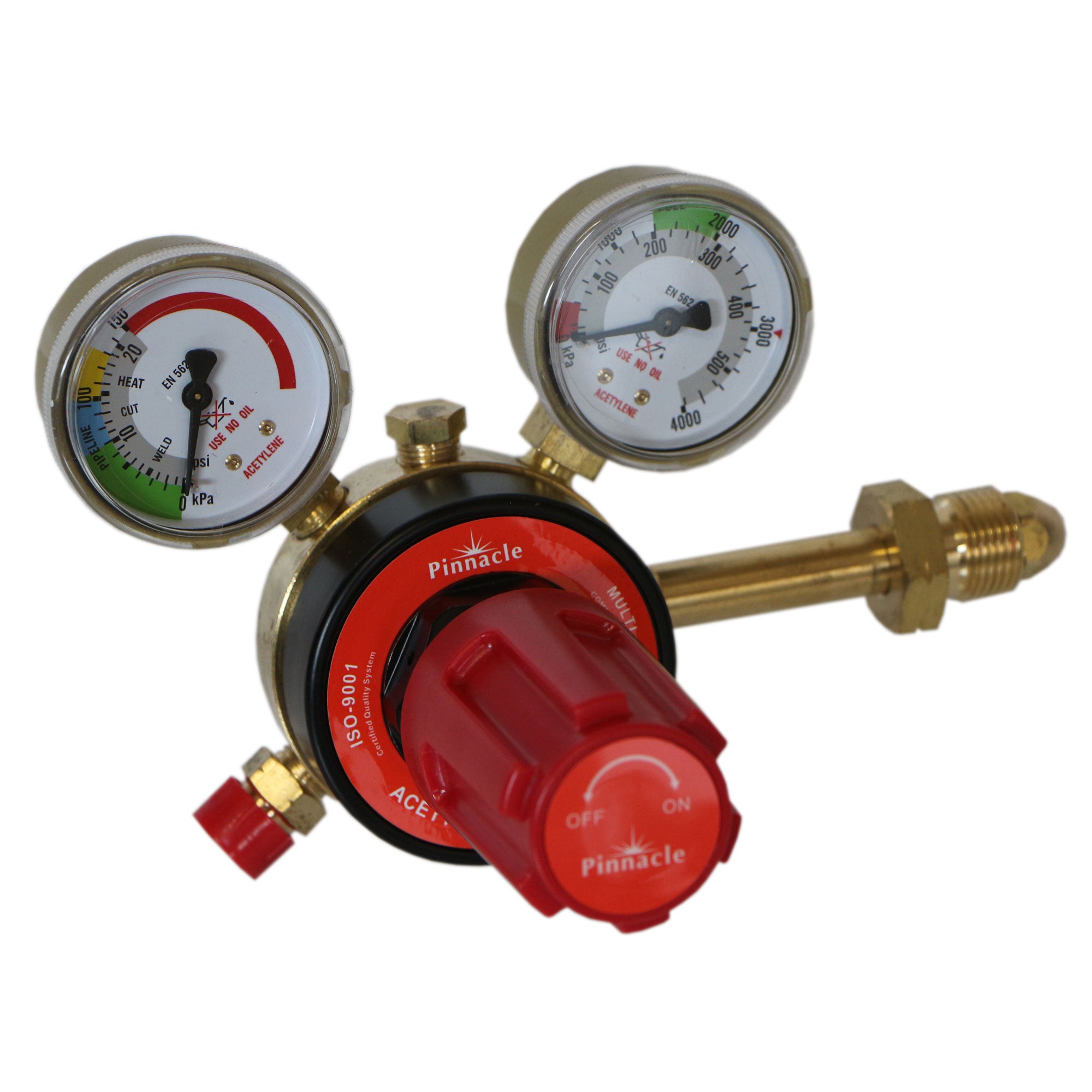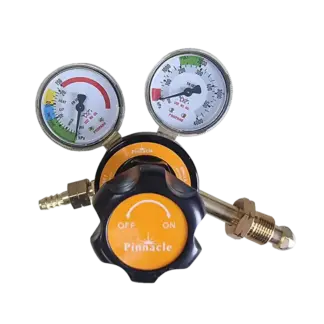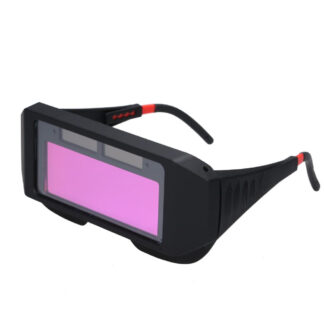Description
Pinnacle Multi-Stage Acetylene Regulator – Reliable Gas Control for Industrial Applications
Description:
The Pinnacle Multi-Stage Acetylene Regulator is a compact and rugged solution, designed to excel in tough working conditions while delivering efficient and dependable gas control. With its outlet pressure gauge, you can accurately set the desired pressures for precise performance. This regulator features a fully encapsulated valve for improved functionality and precision-engineered components that prioritize safety.
Key Features:
- Multi-Stage Design: This twin gauge regulator is specifically designed for use with acetylene, providing consistent delivery rates for industrial applications.
- Ideal for High Gas Consumption: It’s an ideal choice for applications that require higher gas consumption, ensuring dependable performance.
- Input and Output Threads: Equipped with L/H 5/8″ BSP input thread and L/H 3/8″ BSP output thread, along with tailpiece and nut for added convenience.
- Forged Brass Body & Bonnet: Crafted with a forged brass body and bonnet, it offers durability and reliability.
- Neoprene Diaphragm: The neoprene diaphragm enhances performance and gas control.
- Colour Coded Knobs: Colour-coded knobs make it easy to use and provide clear indication.
- Maximum Inlet Pressure: This regulator can handle a maximum inlet pressure of 28 Bar.
- Maximum Outlet Pressure: It provides a maximum outlet pressure of 2 Bar.
What Is a Multi-Stage Regulator?
A multi-stage regulator, like the Pinnacle Multi-Stage Acetylene Regulator, operates in multiple stages to reduce high-pressure gas from the cylinder to a stable and lower working pressure. It provides consistent gas delivery rates and precise control, making it ideal for various applications.
What Is the Highest Stable Regulator Pressure for Acetylene?
The highest stable regulator pressure for acetylene is typically around 15 psi (pounds per square inch). However, the specific pressure may vary based on the application and equipment used.
What Pressure Should I Set My Oxygen and Acetylene?
The recommended pressure settings for oxygen and acetylene depend on the welding or cutting task, material thickness, and equipment specifications. Consult your welding equipment manual or manufacturer’s guidelines for the appropriate pressure settings for your specific application.
What PSI Is Needed for an Acetylene Torch?
The required PSI (pounds per square inch) for an acetylene torch can vary based on the torch type, tip size, and application. Common acetylene torch pressures range from 5 psi to 15 psi, but it’s essential to follow equipment-specific recommendations for safe and efficient operation.
Note:
This regulator is not compatible with Portapak Bottles.






Reviews
There are no reviews yet.